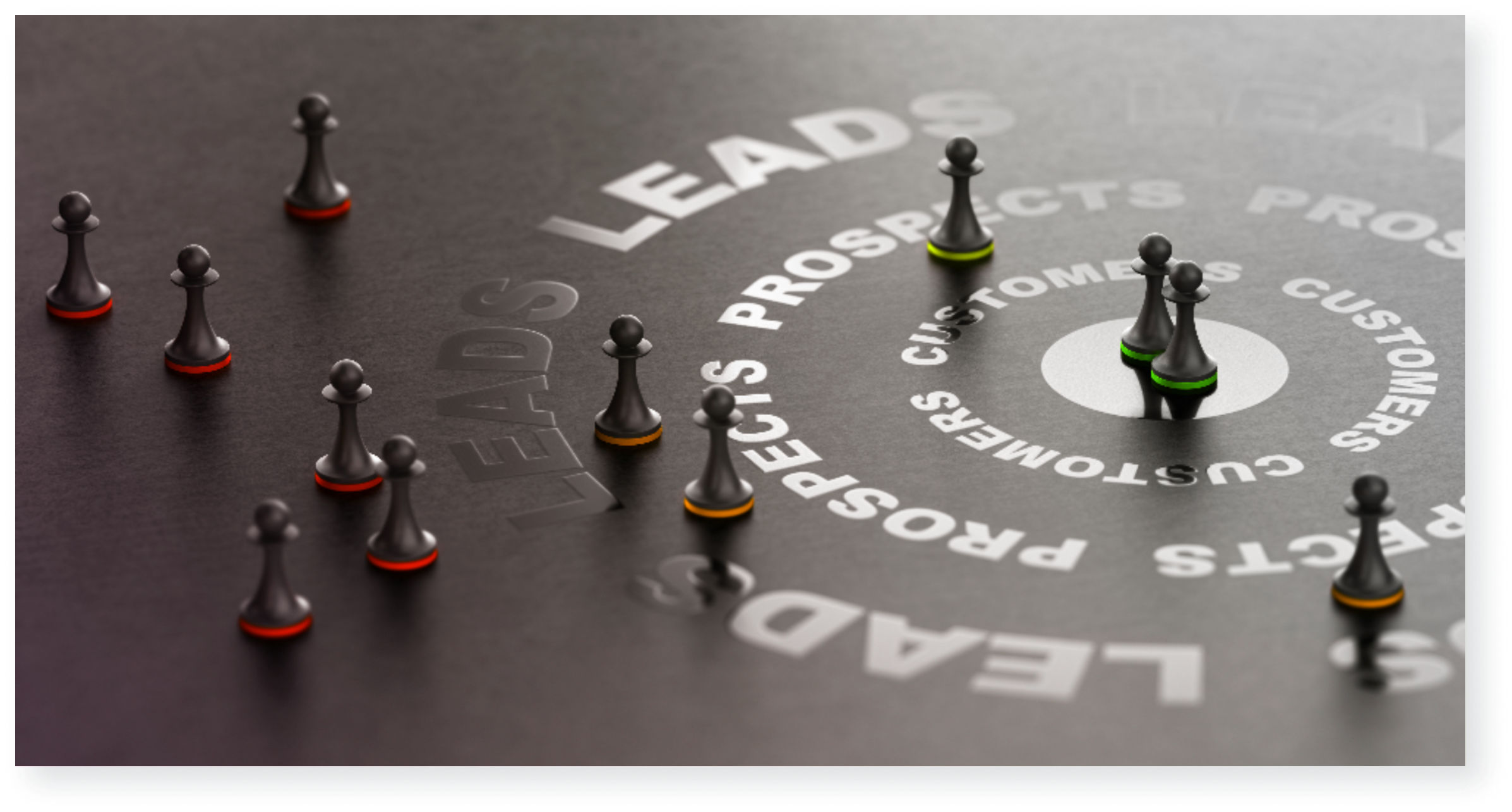DemandGen articles
< Back to blog
How to better understand your customers’ needs (without the limitations of traditional customer data)
DemandGen RevOps Sales
November 1, 2023
Trending articles
How to build true demand in today’s buyer’s market, with Manuel Rietzsch
DemandGen
September 20, 2023
The undeniable reality of demand marketing is that buying behaviors have changed, and the old tried-and-true playbook hasn’t aged gracefully. “It’s much more a buyer’s market now than it used to be,” says Manuel Rietzsch, VP of Revenue Marketing at […]
Data integrity and revamping your ICP
DemandGen RevOps Sales
August 16, 2023
Every GTM motion in a RevOps organization has its own distinct function. Yet somehow, they’re supposed to collaborate darn near seamlessly. Data is the medium that facilitates that interdependence. It’s a common language that provides common context to everyone in […]
Everything you need to know about growth marketing
DemandGen
August 9, 2023
Growth marketing is a multi-pronged approach to scaling profits, gaining an edge in a competitive market and driving tangible results with minimal effort. It’s become a respected and core marketing function because of its ability to open opportunities that create […]
Stop the random tactics and optimize your demand gen
DemandGen
July 26, 2023
Frozen, slashed, cut, trimmed, tightened—no matter which word you hear, this is what happens to demand gen budgets in the current economic environment. And this reality is forcing demand gen organizations to rethink the way they operate. “Our budgets are […]
6 tips to optimize lead handoff between marketing and sales
DemandGen Sales
July 12, 2023
You have one hour. Yes, just one hour to follow up with leads and secure the best chance of speaking to key decision-makers and converting them into customers—at least, that’s what a study from the Harvard Business Review found. Of […]
9 steps to craft your perfect go-to-market strategy
DemandGen RevOps Sales
July 5, 2023
A well defined go-to-market strategy is the difference between a successful launch and a flop. It outlines your product’s target market, customers, channels, pricing and more—and makes sure that all teams are aligned and working together. Creating and perfecting a […]
Lead generation vs. sales prospecting: Key differences, examples and strategies
DemandGen Sales
June 21, 2023
They’re not the same. But you’re not wrong for thinking that the goals of lead generation and sales prospecting sound similar. While both strategies aim to generate new customers, lead generation focuses on generating large volumes of leads, while sales […]
7 steps to effective lead management
DemandGen
May 31, 2023
Lead management isn’t a totally new idea, especially in the demand gen world. But, as your business grows and scales, you’ll need to make sure everyone understands what it is so they can follow the process you’ve built. Empowering your […]
How (and why) RevOps teams use exegraphic data, with Intelligent Demand’s Nicole Davolt
DemandGen RevOps Sales
May 17, 2023
RevOps teams are under enormous pressure to grow their companies, and to grow them efficiently. Even C-suites are feeling this pressure. When they do, they turn to Nicole Davolt, a RevOps strategist at Intelligent Demand. “We align their tactics, their […]
9 account based marketing (ABM) tactics to help maximize your ROI
DemandGen
May 10, 2023
We get it. Account based marketing (ABM) on paper sounds like a great idea. All you have to do is create a campaign that targets a specific account or set of accounts, track the results and adjust your strategy as […]
It’s time to improve your aim
DemandGen RevOps Sales
May 3, 2023
Most revenue teams have more prospects in their CRM than they can handle. The problem, frankly, is not building up contact lists—the problem is maximizing the pipeline to identify the best prospects and engage them effectively. The sub-par prospects that […]
Account based marketing examples
DemandGen
April 12, 2023
Account based marketing (ABM) has become one of the hottest new trends in marketing. It produces impressive results, making it a firm favorite strategy among leading companies, business startups and marketers. You may be wondering, beyond just being an in-vogue […]
So you think you’ve exhausted your market?
DemandGen RevOps Sales
April 5, 2023
With the economy lagging and experts forecasting possible recessions, forward-thinking companies are looking to stimulate new revenue in new markets. In a vacuum, not a bad strategy. But many companies doing so are leaving money on the table in their […]
MQL vs. SQL: What’s the real difference?
DemandGen Sales
March 29, 2023
Marketing and sales teams use a lot of acronyms, and we throw them around like everyone knows what they mean. Most people in the field quickly catch on and come to understand the words associated with the acronym, but often […]
B2B revenue generation: Definition, examples and 7 strategies to increase profits
DemandGen
March 8, 2023
Did you know that revenue generation isn’t just the responsibility of your sales team? In fact, all departments—including marketing, customer success, revenue operations and even finance—play a role in driving the growth of your business. So, if you want to […]
What chatbots teach revenue teams about using AI
DemandGen RevOps Sales
March 2, 2023
AI has reached a tipping point in accessibility and proficiency, and Sales and Marketing teams are suddenly engaging with AI in new ways—many for the first time. They’re using ChatGPT, for instance, to write their B2B prospecting emails, personalization and […]
Layering exegraphics and intent data to up your game (and your returns)
DemandGen RevOps Sales
February 28, 2023
RevOps teams are justifiably driven to incorporate intent data in their prioritization strategies. Which makes perfect sense: In the world of demand gen and cold outreach, a prospect who has voluntarily expressed interest in a solution your company offers is […]
Marketing qualified lead: What is it really?
DemandGen
February 8, 2023
Companies can’t survive without customers. And every customer is a “converted” lead. But, not all leads will convert. Some may not fit your ideal customer profile and others may not be ready to buy. That’s where marketing qualified leads, or […]
B2B demand generation marketing: Nearly everything you need to know
DemandGen
January 18, 2023
Whether you’re working at a startup or a large enterprise, demand generation marketing is too good for business to ignore. Because imagine this… You’ve just launched a unique, innovative SaaS platform. You have no doubt that it’s the best on […]
Evolving through the phases of a mature demand gen engine
DemandGen
January 5, 2023
If we had to summarize the modern relationship between marketing and sales, it would sound something like: Generate more and better leads, so we can close more deals more effectively. But how? How can marketing leverage the data it has […]
The lead generation best practices you need to adopt in 2023
DemandGen
December 22, 2022
How do you acquire good B2B leads? First, let’s clear the air. “Good” is relative. To some, good leads are contacts that match their ideal customer profile (ICP). To others, it’s anyone that shows signs of purchase intent or has […]
What is outbound lead generation?
DemandGen
November 30, 2022
Not all outbound lead generation strategies are built equally. While some are effective within a short time, others require a compound investment. This post distills the best outbound lead generation strategies and how to execute them to get lasting results […]
Inbound vs. outbound sales: What, when and how
DemandGen Sales
November 15, 2022
We studied the best marketing and sales minds and distilled them to a simple conclusion: “Every sales strategy can be categorized into two buckets; inbound or outbound, and neither is the better way to sell.” In fact, both are great […]
10 key demand generation metrics for B2B marketing
DemandGen
November 2, 2022
Do you think your company’s CEO cares about web traffic, impressions or leads as much as your marketing team? Probably not! Because what she really cares about is revenue. So, as a B2B marketer, you need to be able to […]
13 essential demand generation tools for B2B marketers
DemandGen
October 12, 2022
Your marketing budget may be tight. But some tools are too valuable to pass up—especially when it comes to a process like demand generation marketing that depends on your brand’s ability to reach and engage potential new customers. In this […]
7 of the best demand generation examples for B2B marketing
DemandGen
October 6, 2022
Demand generation (aka demand gen) is all about creating awareness and interest for your brand and what you have to offer. Unlike lead generation, demand generation is a long-term approach that focuses on building relationships with customers rather than simply […]
Demand generation vs lead generation: Key differences, examples and strategies for B2B marketing
DemandGen
September 28, 2022
Demand generation vs lead generation? Learning the difference between these two strategies is simple. Demand generation is the process of building awareness and interest in your brand by showing potential prospects you understand their problem. Lead generation, on the other […]
Your ICP is broken, and here’s why
DemandGen RevOps Sales
September 22, 2022
Ideal customer profiles are a staple of B2B sales strategy. And they make sense: if you can identify the traits that make your best customers your best customers, you can target the same traits in your best prospects. The problem […]
Demand generation strategy: 5 core steps for B2B marketing teams
DemandGen
September 8, 2022
You can attempt to generate cold leads all day. But if there’s no desire or demand for your offer… Well, then you might be wasting your time. That’s why demand generation is an essential component of B2B marketing. Because if […]
Outsourced lead generation: How to choose the right lead generation service
DemandGen
August 31, 2022
Cold calling. Email marketing. Referrals. LinkedIn. Facebook Ads. Content Marketing. SEO. You see where we’re going? There are many ways you can generate leads for your business. But that doesn’t mean lead generation is easy! In fact, according to a […]
What is a marketing automation funnel?
DemandGen
August 18, 2022
Many marketing teams use a funnel to grow their business and build their customer base. They know most prospects aren’t ready to purchase the moment they hear about their product or service, and the funnel nurtures and moves leads along. […]
Automated lead generation: What you need to know to get started
DemandGen
August 3, 2022
You probably spend an excessive amount of time chasing leads down. Lead generation is a never ending necessity for businesses, especially for companies trying to grow. (And, what company isn’t?) Because of this, you might feel like you’re starting at […]
What are exegraphics?
DemandGen RevOps Sales
July 22, 2022
Straight up, the B2B world does not get measured and tracked the same as the B2C world. Years ago, consumer sales vendors used to track just demographics. Today, they know a ridiculous amount beyond your age, your gender or your […]
Demand funnel 101: How to build and grow a demand gen funnel
DemandGen
June 22, 2022
As organizations invest in demand generation, the use of the demand funnel becomes a clear way to organize and move prospects into buyers. Implementing a clear demand generation funnel can be challenging because it requires clear sales and marketing alignment. […]
The problem with B2B data (and the solution your team is waiting for)
DemandGen RevOps Sales
June 15, 2022
B2B buying behavior involves multiple stakeholders, evolving buying criteria and an elongated consideration cycle. The sales and marketing tech stack only increases this complexity, so it seems counterintuitive to say B2B companies need another source of data to add to […]
Where to invest to solve sales and marketing misalignment
DemandGen RevOps Sales
June 4, 2022
Good news first: Advancements in B2B sales have a catalytic effect on humanity. Who would’ve thought? Improving the ability of buyers and sellers of complex solutions to find each other more efficiently makes the world a better place. Whether your […]
AI for lead generation: 6 tools to fuel your pipeline
DemandGen
May 26, 2022
Demand generation is exhaustive. To create a profitable business, demand gen leaders need to consistently bring in high-quality leads at a high volume. You want to bring in enough leads to fill your entire sales pipeline, but traditional lead generation […]
How to build a Digital Center Of Excellence
DemandGen
May 10, 2022
Never-ending waves of technology innovation wash across marketing departments every day. They’re shifting how marketing teams operate—and opening new opportunities. You might adopt some and ignore others. Regardless of how you decide to build your tech stack, one technological strategy […]
8 basic digital marketing tactics for B2B sales
DemandGen
May 10, 2022
Your organization may already be investing in B2B digital marketing, but are you getting a decent return on investment? Companies must understand how to generate consistent sales using the marketing dollars spent. Throwing more money at your next B2B campaign […]
How to use lookalike data to fuel your B2B pipeline
DemandGen
May 10, 2022
Don’t you wish B2B marketing had something as effective as Facebook lookalike audiences to help you target your ideal customers? You may have an extensive background in running Facebook ads. Most people who’ve run these ads have experience with B2C […]










































